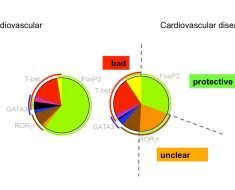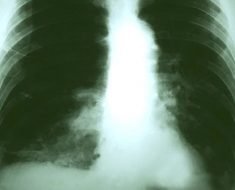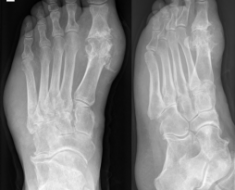Hodgkin’s lymphoma is a type of cancer that affects the lymphatic system and increases a patient’s susceptibility to infection. In particular, the B-lymphocytes multiply at an abnormal rate and accumulate in the lymph nodes. Diagnosis is based on microscopic examination of lymph node biopsy.
An outline of the steps taken to diagnose Hodgkin’s lymphoma is given below:
- Diagnosis is confirmed by examining a lymph node biopsy under the microscope. On examining the biopsy, a particular type of cell that features in Hodgkin’s lymphoma is checked for called the Reed-Sternberg cell. If this cell is detected, the diagnosis is confirmed.
- Blood tests are also taken to determine the levels of red and white blood cells and to check the function of major organs such as the kidneys and liver. Blood tests are also used to assess the patient’s general health and suitability for chemotherapy.
- A bone marrow sample is taken from the pelvis using a long wide-bored needle. This bone marrow is checked for presence of the cancer. Imaging studies including a computed tomography (CT) scan and magnetic resonance imaging (MRI) scan are also performed to determine whether the cancer has spread to other parts of the body.
- A positron emission tomography (PET) scan may also be performed to determine cell activity in different areas of the body and assess cancer spread, as well as the impact of any treatment. A PET scan may be performed in conjunction with a CT scan to provide an accurate picture of tissue function in different body parts.
Staging
Once a diagnosis of Hodgkin’s lymphoma is confirmed, the cancer is staged. Staging helps determine the best possible treatment and the potential survival and treatment outcomes.
The main stages of Hodgkin’s lymphoma include:
- Stage 1, when the cancer is limited to one group of lymph nodes that lie either below or above the diaphragm, such as the groin lymph nodes or the neck lymph nodes.
- Stage 2, when two or more lymph node groups are affected but they are confined to either below or above the diaphragm.
- Stage 3, when the cancer has spread to groups of lymph nodes both above and below the diaphragm.
- Stage 4, when the cancer has spread via the lymph system and reached the bone marrow and organs.
Sources
- http://www.nhs.uk/conditions/Hodgkins-lymphoma/Pages/Definition.aspx
- www.cancer.org/acs/groups/cid/documents/webcontent/003105-pdf.pdf
- www.lls.org/…/hodgkinlymphoma.pdf
- http://www.cancercouncil.com.au/hodgkin-lymphoma/
Further Reading
- All Hodgkin's Lymphoma Content
- What is Hodgkin’s Lymphoma?
- Hodgkin’s Lymphoma Classification
- Hodgkin’s Lymphoma Pathology
- Hodgkin’s Lymphoma Prognosis
Last Updated: Feb 26, 2019

Written by
Dr. Ananya Mandal
Dr. Ananya Mandal is a doctor by profession, lecturer by vocation and a medical writer by passion. She specialized in Clinical Pharmacology after her bachelor's (MBBS). For her, health communication is not just writing complicated reviews for professionals but making medical knowledge understandable and available to the general public as well.
Source: Read Full Article





